AMD Teases Radeon RX 480: Launching June 29th For $199
by Ryan Smith on May 31, 2016 10:00 PM EST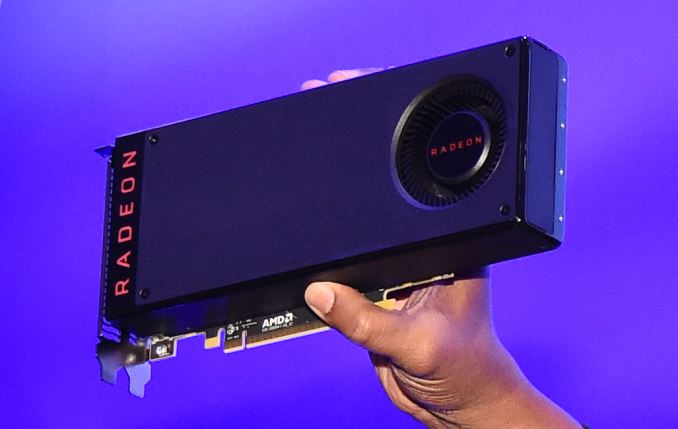
Kicking off at this moment is AMD’s Computex 2016 keynote. The company has multiple announcements scheduled this evening, but we’re going to jump right into an area that has been of extreme interest for many of our readers: GPUs.
Ahead of this evening’s event, AMD sent out an email to the press teasing the first of their discrete Polaris architecture based cards. Called the Radeon RX 480, AMD has unveiled much of the product’s specifications, but also its price and availability. When the card hits the streets on June 29th, it will be starting at the crucial mainstream battleground price point of $199.
| AMD Radeon GPU Specification Comparison | ||||||
| AMD Radeon RX 480 | AMD Radeon R9 390X | AMD Radeon R9 390 | AMD Radeon R9 380 | |||
| Stream Processors | 2304 (36 CUs) |
2816 (44 CUs) |
2560 (40 CUs) |
1792 (28 CUs) |
||
| Texture Units | (Many) | 176 | 160 | 112 | ||
| ROPs | (A Positive Integer) | 64 | 64 | 32 | ||
| TFLOPs (FMA) | >5 TFLOPs | 5.9 TFLOPs | 5.1 TFLOPs | 3.5 TFLOPs | ||
| Boost Clock | >1.08GHz | 1050MHz | 1000MHz | 970MHz | ||
| Memory Clock | 8Gbps GDDR5 | 5Gbps GDDR5 | 5Gbps GDDR5 | 5.5Gbps GDDR5 | ||
| Memory Bus Width | 256-bit | 512-bit | 512-bit | 256-bit | ||
| VRAM | 4GB/8GB | 8GB | 8GB | 2GB | ||
| Transistor Count | ? | 6.2B | 6.2B | 5.0B | ||
| Typical Board Power | 150W | 275W | 275W | 190W | ||
| Manufacturing Process | GloFo 14nm FinFET | TSMC 28nm | TSMC 28nm | TSMC 28nm | ||
| Architecture | GCN 4 | GCN 1.1 | GCN 1.1 | GCN 1.2 | ||
| GPU | Polaris 10? | Hawaii | Hawaii | Tonga | ||
| Launch Date | 06/29/16 | 06/18/15 | 06/18/15 | 06/18/15 | ||
| Launch Price | $199 | $429 | $329 | $199 | ||
First off, the RX 480 will include 36 CUs. If we assume 64 stream processors to a CU – the GCN standard – then this brings us to 2304 SPs. AMD has not named the specific Polaris GPU being used here, but given the CU count I believe it’s reasonable to assume that this is a Polaris 10 SKU, as I’ve already seen Polaris 11 and it’s a very small chip better suited for notebooks.
AMD also revealed that the card would offer over 5 TFLOPs of compute performance. Given what we know about the CU count, this allows us to estimate the GPU clockspeed. This puts the lower bound of the GPU clockspeed at 1.08GHz and an upper bound (6 TFLOPs) at 1.3GHz, which would be in the range of 10-30% higher clocked than comparable Radeon 300 series cards.
In terms of raw numbers this puts the RX 480 just shy of the current Radeon R9 390. However it also doesn’t take into account the fact that one of the major focuses for Polaris will be in improving architectural efficiency. I would certainly expect that even at the lower end of clockspeed estimates, RX 480 could pull ahead of the R9 390, in which case we’re looking at a part that would deliver performance between the R9 390 and R9 390X, with final clockspeeds and architectural efficiency settling just how close to R9 390X the new card gets.
On the memory front the card is equipped with 8Gbps GDDR5, running along a 256-bit memory bus. This is the typical bus width for AMD x80-series cards, and the high clocked 8Gbps GDDR5 means that we’re looking at a total of 256GB/sec of memory bandwidth to feed the RX 480’s GPU. AMD’s partners will be offering both 4GB and 8GB cards, and for the purposes of this teaser I assume that pricing information will be for the 4GB card, with 8GB serving as a premium option.
Finally, AMD has also revealed the TDP for the RX 480, stating that it will be a 150W card. As Polaris is built on 14nm FinFET, we’re seeing first-hand the benefits of finally making the long-awaited jump off of 28nm, as this means we’re looking at Radeon R9 390 series performance in a card that, on paper, consumes only a bit more than half the power. This also puts the RX 480 right in the sweet spot for mainstream cards, as 150W has traditionally struck a good balance between performance and power consumption that allows for a fast card that doesn’t require aggressive cooling, and is more compatible with OEM computer vendor case & cooling designs.
Cementing its place as a mainstream card, the RX 480 pricing will start at $199. This is an aggressive and heavily fought over price point that has traditionally defined the mainstream segment, attracting buyers who want great 1080p gaming performance that sub-$150 value cards can’t offer, without moving up to more expensive (and power hungry) $300+ cards. In this sense the RX 480 is a direct replacement for the R9 380, AMD’s Tonga-based card that hit the market roughly a year ago at the same price. Going by the raw numbers alone, RX 480 would be 40% (or more) faster than the R9 380.
Meanwhile I won’t speculate too much on the competitive market from a teaser, but it’s worth noting that this is nearly half the price of NVIDIA’s currently cheapest Pascal card, the GeForce GTX 1070. Interestingly both cards have the same 150W TDP, but looking at the throughput figures it does not look like RX 480 is meant to offer quite as high performance as NVIDIA’s card.
Moving on, along with teasing the RX 480’s specifications, AMD’s teaser also laid out their marketing plans for the card. We’re previously talked about how both Oculus and Valve/HTC were encouraging developers to treat VR like a fixed platform, and setting minimum hardware specifications to go along with that. On the AMD side those specifications called for a Radeon R9 290, which the RX 480 should be able to beat.
As a result AMD is planning on heavily promoting the VR aspects of the RX 480, as it brings the necessary performance down from a 250W, $300+ card to a 150W, $200 card. In fact AMD is claiming that VR performance will be closer to $500 video cards, in which case we’d be looking at performance closer to the Radeon R9 Nano, a Fiji based card.
With all of that said, the video card is just one component in the total price of a VR system – you still need the headset – but on the PC side it has also been the most expensive component. Consequently, AMD sees cheaper video cards that offer good VR performance as being important to bringing down the total price of a VR-ready system, and will be promoting the RX 480 as the prescription for entry-level VR needs. From a business perspective, AMD is ultimately expecting VR to be a fast-growing market, so the company wants to make sure they don’t miss out and have more VR-capable cards on the market as quickly as they can.
Along those lines, AMD’s release also makes note that at least one model will be “both HTC Vive Ready and Oculus Rift certified,” though no further details are being offered at this time. Whether this is just a certification matter or if there’s going to be something special about this model (e.g. connectors) is open to speculation.
Finally, now that they’ve revealed the price and much of the specifications of their first Polaris card, AMD is also releasing more details on their overall development and market positioning strategy with Polaris. As AMD has hinted at in the past, Polaris is being specifically developed for and aimed at the mainstream market. AMD wants to recapture lost market share – especially in laptops – and the large mainstream market is seen as the best way to do that. AMD is calling this their “water drop” strategy, and I expect we’ll hear a bit more about it tonight, including the meaning behind the name.
And with all of that said, it looks like we’re going to have a lot of AMD to talk about on June 29th. So until they, stay tuned.
Above: AMD SVP & Chief Architect Raja Koduri, Who Is Very Happy That Polaris Is About To Launch


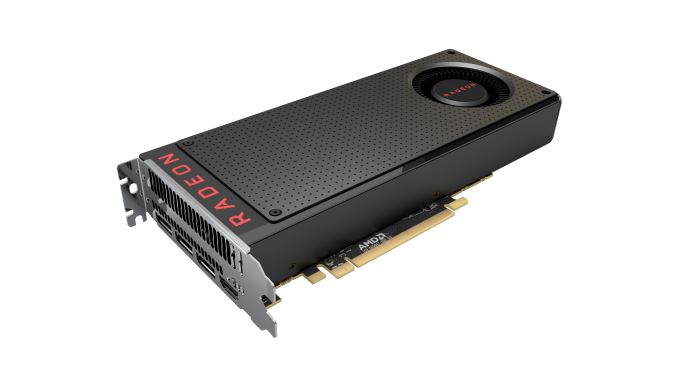

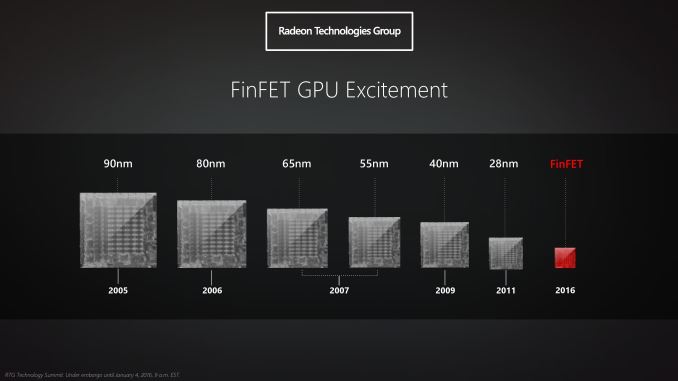
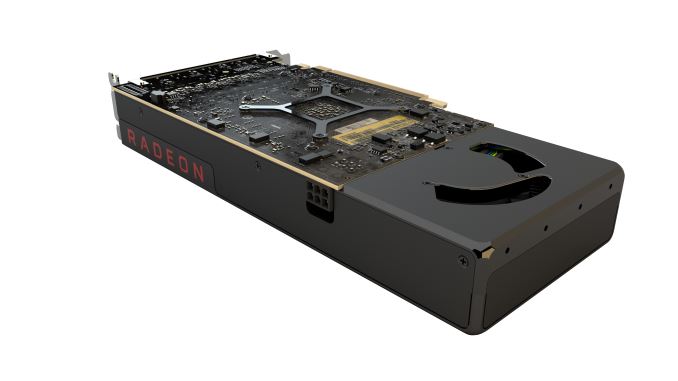




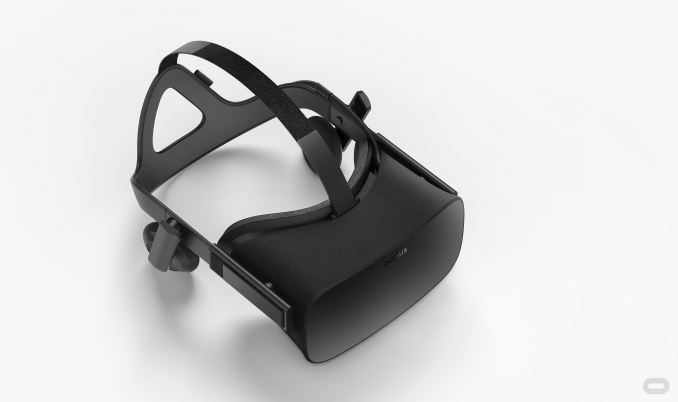









377 Comments
View All Comments
eddman - Friday, June 3, 2016 - link
"That is what I mean by owning the laptop market. Owning the rump of what's left of it."Umm, we still don't know anything about nvidia's upcoming mobile GPUs. You cannot be so sure when there is no comparison point. Nvidia will not just sit idle and lose market share.
"With Vulkan I was talking about the big AAA titles, which for at least the past 5 years have been console first. they then port the console build to the PC."
As was I. Again, there are only three main AAA game platforms, PS, xbox and windows, two of which use DX. Vulkan could become popular, but it doesn't mean that developers would abandon the currently known APIs.
Vulkan could take a hold on android and maybe iOS (if it manages to convince developers to abandon Metal) but all of this is irrelevant because AAA games are not released on mobile.
DX12 based on vulkan? You mean completely? Source.
There might be a shift to low-level APIs, but it doesn't mean DX12 will not be popular. It's a well known, powerful API.
"I have read and watched a fair bit about people who have, and have thus taken to the interwebs to bitch about it. MSFT says they'll fix it. I haven't seen any comment about patching DX9 to use more VRAM. Though I have also seen a read a lot about that too."
Did you know that with DX12, game developers can take full control of multi-GPU setups and no longer rely on GPU drivers? Maybe the current games have not been optimized well for said setups.
Just because MS haven't "patched" the old, obsolete DX9, doesn't mean they'd treat DX12 the same.
"What does it have to do with anything? It has everything to do with graphics cards, and the drivers and games that run on them. Not everyone has your use case, or habits."
Sure, but what does that have anything to do with AMD capturing the market?! Just because one old, dx9 game with tons of mods doesn't play well on windows 10, doesn't mean DX12 will fail. The market isn't decided by how skyrim plays.
"You're right, there is nothing stopping Nvidia, except a desire."
They are focusing on other areas because they already have a huge GPU market share. As soon as this share gets threatened, they will react. They will not just give up one of their main money making arms. Desire has nothing to do with it.
praxis22 - Friday, June 3, 2016 - link
"DX12 based on vulkan? You mean completely?" Completely, no. More as a catchup and because that's the way the industry/weather was moving.Source:
http://www.extremetech.com/gaming/177407-microsoft...
http://www.pcper.com/reviews/Editorial/Microsoft-I...
https://www.reddit.com/r/pcmasterrace/comments/3mc...
I don't doubt DX12 will be popular, but I still say that AAA will be Vulkan first, eventually, (3 years from now, give or take)
http://www.kitguru.net/components/graphic-cards/an...
https://en.wikipedia.org/wiki/Vulkan_(API)
http://www.forbes.com/sites/patrickmoorhead/2013/0...
http://www.bloomberg.com/news/articles/2016-03-03/...
http://www.tomshardware.com/news/nvidia-gpu-tv-con...
https://blogs.nvidia.com/blog/2016/02/16/vulkan-gr...
My point about DX9 is that DX12 is Windows10 (W10) only, and W10 is something MSFT needs the world to adopt. When even Paul Thurrot is shouting about MSFT's "indefensible" behaviour over forced W10 migrations then I think we can say that the adoption curve is behind schedule. The less W10 installs there are, the less demand there is for DX12 only games. For games and game engine companies, that matters. Which is why they're launching engines coded to Vulkan. Valve is also a lead cheerleader for Vulkan and the 600lb gorilla in the PC gaming space.
Again, the PS4 and Xbone are AMD at the core. There is no alternative as Nvidia were not interested, and AMD setup a company division to do the job. (Forbes article above) AMD built Mantle and gave it to the Kronos group, who sucked the best bits into Vulkan. in a few years Vulkan will be the standard that everyone writes to for "gaming" be that PC, mobile or console.
DX12 will not fail, not like Mantle did, but it doesn't have to, if W10 doesn't attract enough users the money and development will go elsewhere, and the PC business is in secular decline, NVidia is just as much a victim of that as MSFT. Unless you're in the commodity business of making things cheaper for the platform that remains, this is where AMD, as a business, appear to be headed, They make the Chips that power the consoles, and thus have some control over the low level drivers & dev kits. Sure Microsoft wants DX12 to succeed, but it wants it's console to do the same.
Again, I'm not an AMD fanboy, I just happen think that the evident business strategy is very clever, doubtless they were lucky too, but as a full stack vertical, they seem to be in a good place to prosper in the declining PC business environment.
VR is the erstwhile saviour of #PCMasterRace but if Google/Android provide a cheap working headset with real presence the need for the Rift/Vive goes away, and with it the need for the PC backend.
eddman - Friday, June 3, 2016 - link
"Completely, no. More as a catchup and because that's the way the industry/weather was moving."So it is NOT based on vulkan at all. It was just perhaps inspired by mantle and is simply similar to mantle and vulkan, in the sense that all three are low-level APIs.
"I still say that AAA will be Vulkan first, eventually"
Using the words "might" and "could" won't hurt in that sentence. Right now, there are more available and upcoming DX12 games than vulkan.
"DX12 is Windows10 (W10) only, and W10 is something MSFT needs the world to adopt. When even Paul Thurrot is shouting about MSFT's "indefensible" behaviour over forced W10 migrations then I think we can say that the adoption curve is behind schedule. The less W10 installs there are, the less demand there is for DX12 only games. For games and game engine companies, that matters."
Just recently, windows 10 became the no. 1 OS on steam and is still climbing. Gamers are clearly adopting it fast. The overall, worldwide share of windows 10 is still low, but a huge lot of PC users never play games to begin with, so the steam numbers are a better indication.
I don't doubt that more upcoming games will adopt vulkan, but I don't think we'll see many vulkan only games, except for games made by id Software.
"Which is why they're launching engines coded to Vulkan."
You don't know that for sure. There could be many reasons. Maybe they just don't want to rely on one API alone.
"Valve is also a lead cheerleader for Vulkan and the 600lb gorilla in the PC gaming space."
Of course they are. They are desperately trying to make SteamOS happen. They have an agenda, not that it's a bad thing.
"Again, the PS4 and Xbone are AMD at the core. There is no alternative as Nvidia were not interested, and AMD setup a company division to do the job. (Forbes article above) AMD built Mantle and gave it to the Kronos group, who sucked the best bits into Vulkan."
I don't see why it matters if consoles use AMD chips or not. Their GPUs work just as good with DX12.
"in a few years Vulkan will be the standard that everyone writes to for "gaming" be that PC, mobile or console."
How come you never write "could" and "might"? You are so sure as if you went to the future and came back.
"if W10 doesn't attract enough users the money and development will go elsewhere, and the PC business is in secular decline"
Windows 10 is gaining among gamers, and is no. 1 on steam as I pointed out, and X1 is DX12 too.
"NVidia is just as much a victim of that as MSFT. Unless you're in the commodity business of making things cheaper for the platform that remains, this is where AMD, as a business, appear to be headed,"
NVidia still offers cheaper GPUs and will keep offering them. No change there. Gamers usually buy cards based on their price/performance, be it NVidia or AMD.
"They make the Chips that power the consoles, and thus have some control over the low level drivers & dev kits. Sure Microsoft wants DX12 to succeed, but it wants it's console to do the same."
Are you implying that AMD will cripple DX12 on xbox? MS would never allow that. Actually, MS themselves might be involved in writing the drivers. There is no way MS won't make DX12 run as fast as possible on their own console.
"Again, I'm not an AMD fanboy, I just happen think that the evident business strategy is very clever, doubtless they were lucky too, but as a full stack vertical, they seem to be in a good place to prosper in the declining PC business environment."
Never thought you were. The PC business still mainly relies on price/performance, not APIs. As long as NVidia keeps things competitive, they will keep selling.
"VR is the erstwhile saviour of #PCMasterRace but if Google/Android provide a cheap working headset with real presence the need for the Rift/Vive goes away, and with it the need for the PC backend. "
AAA games come out on consoles and PCs. As long as they keep their lead in performance over mobile, it'd stay that way, VR or no VR.
praxis22 - Monday, June 6, 2016 - link
'How come you never write "could" and "might"? You are so sure as if you went to the future and came back.'It's called a narrative argument, (look it up) as opposed to rebutting statements. Which stands in many cases as an opening gambit to a Staw Man or Reduction ad Absurdum.
"Are you implying that AMD will cripple DX12 on xbox?" No. Far from it, I think AMD have actually a vested interest in DX12 over and above Vulkan. They want as much support for their cards as possible, preferably support that doesn't require them to write the drivers. This is part of the whole push to Vulkan, offloading the driver support to the games writers, via the low level API.
I would argue that Price/Performance is only relevant at the low end. Nobody who buys an expensive card cares about that, they want speed and/or specs. Objectively by that measure my R9 390 is a lousy card due to the power requirements. My 850W PSU sounds like a hurricane when I have a game running, but I wanted the speed and VRAM, and I pay the electric bill, so.
I appreciate you disagree with what I say, but where is your argument?
praxis22 - Monday, June 6, 2016 - link
Ah, the curse of auto correct... Reductio Ad Absurdumeddman - Friday, June 3, 2016 - link
FYI, I love AMD's push for fast but cheap cards. It'd be a win for consumers a.k.a me, but to think that this would suddenly tip the market share scale, would be wishful thinking.praxis22 - Monday, June 6, 2016 - link
Given the timescales involved with AAA games, (typically 3-5 years) I think "suddenly" is the wrong term. Like I said, give it three years.piiman - Saturday, June 4, 2016 - link
" since Direct X12 doesn't support dual cards"say what?
praxis22 - Monday, June 6, 2016 - link
With DX12 and Vulkan, there are two forms of Multi-Adapter support. Implicit & explicit. Implicit Multi-Adapter is when the OS does it for you, this mode is the one where the OS can use two different cards, AMD +Nvidia, Nvidia +Intel, etc. And games that write directly against DX12 can use the two cards as one device.Explicit Multi-Adpater is enabled at the application level, (by games) and requires that all cards are identical.
It is my understanding that DX12 on Windows 10 does not currently support Implicit Multi-Adapter, though MSFT have promised to fix that. All the DX12 games seen so far have been Explicit Multi-Adapter when they have supported multiple cards at all.
extide - Monday, June 6, 2016 - link
It supports both. THIS VERY SITE has tested both configurations. You can do it yourself as well will software and hardware already on the market. Dude, while you may be an experienced economist, you don't really know much about the computer hardware/pc gaming world. I mean honestly, if the RX 480 competed with the 1070, AMD would be selling it for $299, not $199. It would STILL be an amazing deal and they would sell shitloads of them, plenty enough to gain marketshare even.